Top Android sheet music apps compared

Sheet music apps are a category of software that lets you organize and display your sheet music on your tablet or smartphone. There are both free and paid offerings to choose from in the Play Store. The offer for Android is not as extensive as for iOS, but there are still some very good options to choose from.
Advantages and disadvantages of the "digital music stand"
Using a digital sheet music app on a tablet instead of an analog music stand offers similar advantages as an e-book reader. Musicians can carry their entire repertoire with them at all times, saving space and weight.
In addition to simply displaying the sheet music, many apps offer useful additional functions such as a metronome, playback of an audio file for accompaniment, their own sheet music store, midi support, insertion of sketches and comments, their own document scanner for photographing sheet music, and much more.
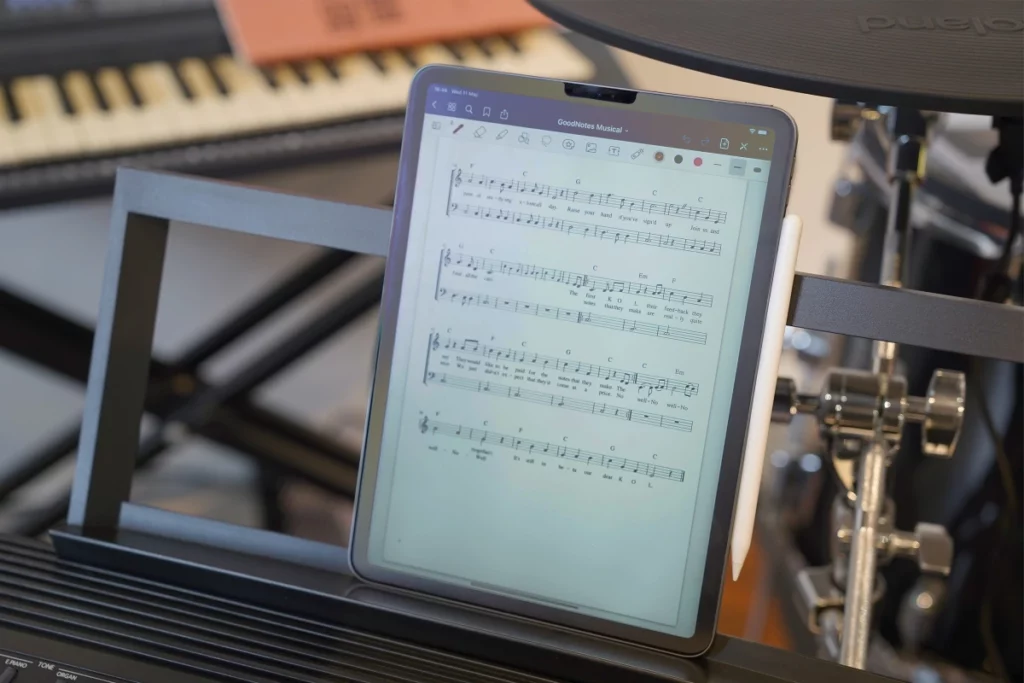
A big disadvantage of the music apps is the smaller screen on most tablets compared to the paper format.
A 14-inch tablet is required to display an A4 sheet in its original size. However, if you want to use the tablet for other purposes, this format is a bit clunky and not well suited for carrying around, so the most common tablets are offered in the 11 to 13 inch range.
The apps take various approaches to solving this problem.
Many apps allow you to crop, halve, or otherwise split the sheet music to make the most efficient use of precious screen real estate.
Hands free playing

App developers have found some innovative solutions to save the musician from having to turn the pages manually, or at least to make it easier.
Two approaches are being pursued here. Firstly, the use of technical aids such as a foot pedal or face recognition (e.g. winking to turn the page).
On the other hand, intelligent control according to a given tempo and rhythm, so that the page can be turned or scrolled automatically.
Many pieces do not run linearly, but contain repeats that make it necessary to jump back to previous bars, which can of course be on different pages.
Also for this challenge, different strategies are pursued by the developers.
One possibility is to be able to set jump marks with which the musician can jump directly from one place to any other place in the sheet of music.
Another possibility is again the intelligent control, where the app however has to know the position of the repeat signs.
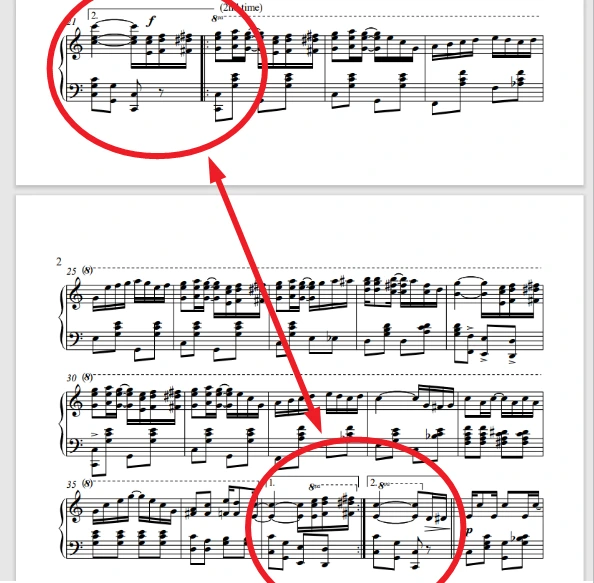
The Test
We have tested some of the most popular sheet music apps according to these criteria. This article is not intended to pick a winner, but to help you find an app that meets your needs.
Five Lines
Of course, our own app should not be missing from the comparison. A bit of self-promotion should be allowed. Nevertheless, we try to be objective.
With Five Lines we wanted to develop an app that combines the advantages of Musescore and MobileSheets, and with which it should be possible to play freehand to your own scores, e.g. from Pdf files.
Importing Files and Sheet Music Library
The app supports the following file formats: PDF, Jpg, Png and Bmp. The files can be imported from local storage as well as from all popular cloud providers.
After the scores are imported, they can be categorized by artist, title, instrument, genre and any number of freely definable tags.
Multiple scores can be combined into a set list.
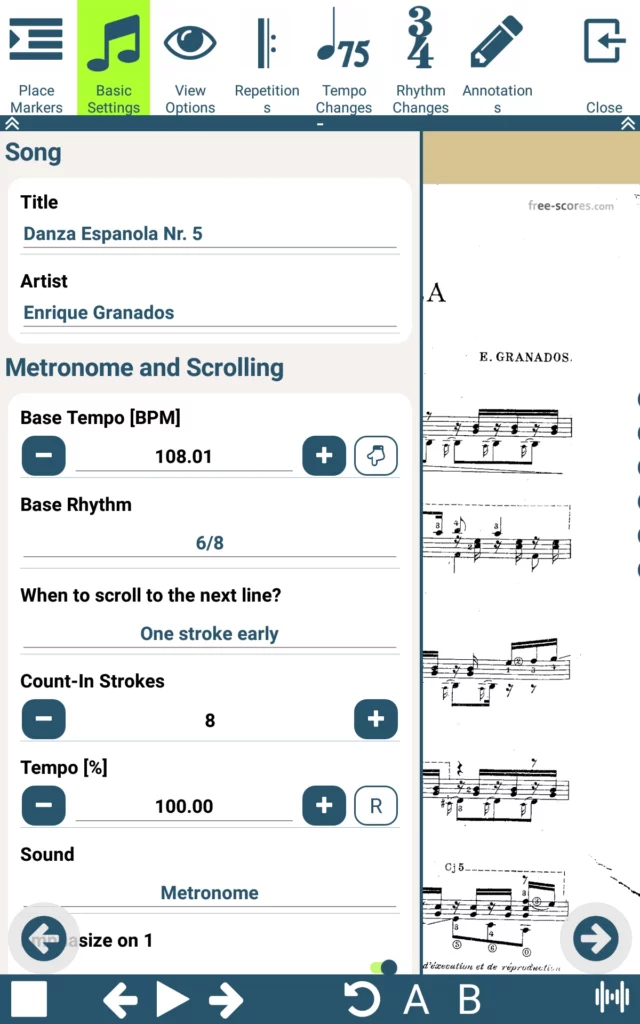
Turning Pages and Scrolling
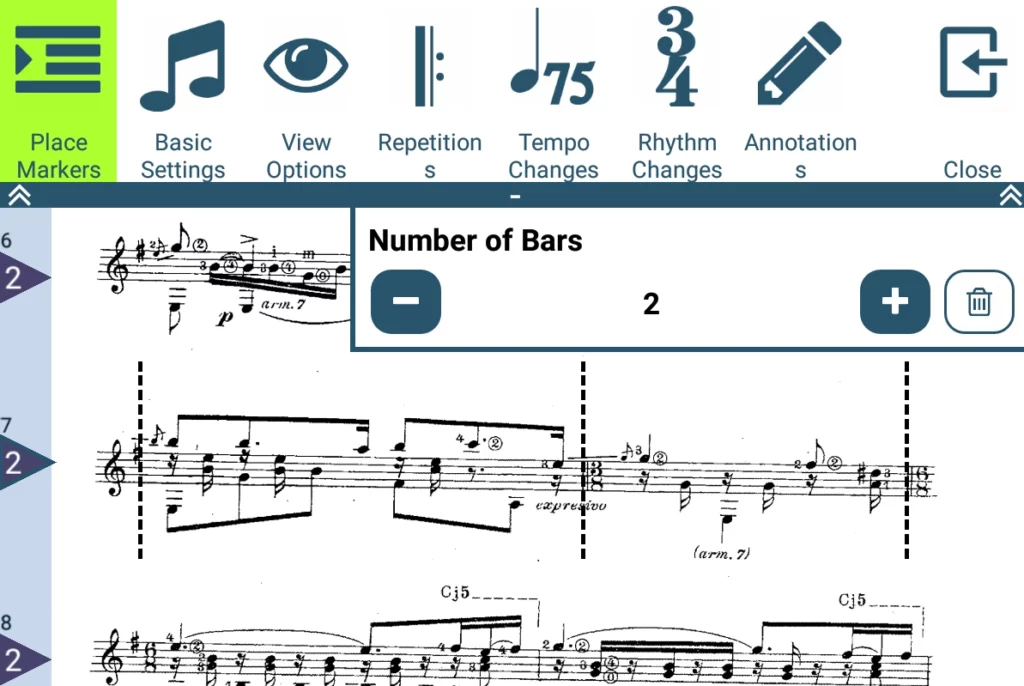
To enable freehand playing, you must first set up the score and specify tempo and time signature.
The “main work” is to mark the staves and to indicate for each stave how many bars this stave contains. To make the flow even more precise, you can also mark the positions of the bar lines exactly.
If your music contains repeat signs and brackets, you must also mark them. The same applies to tempo and rhythm changes.
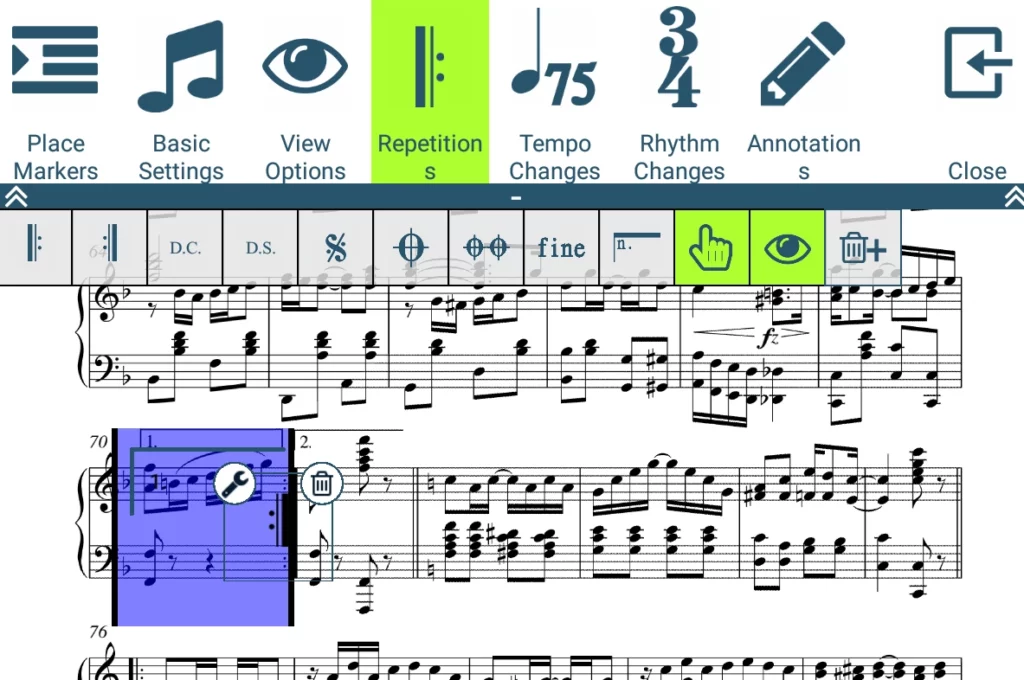
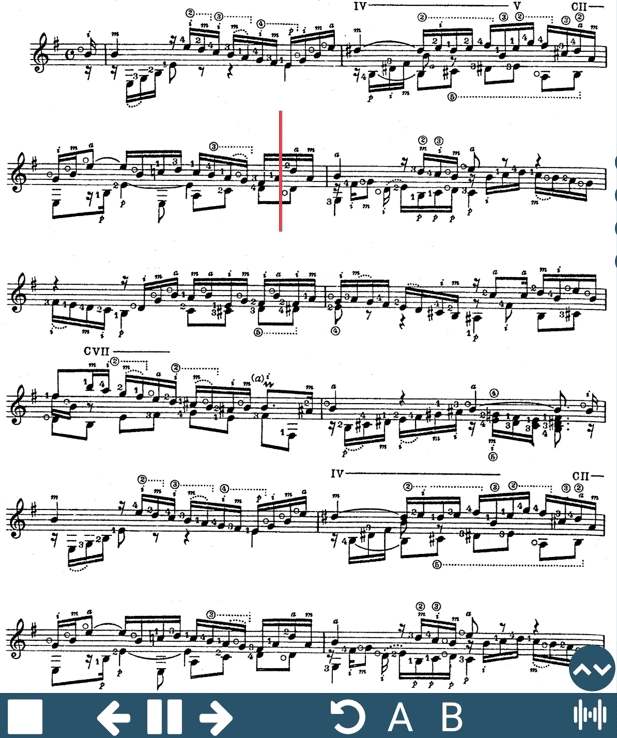
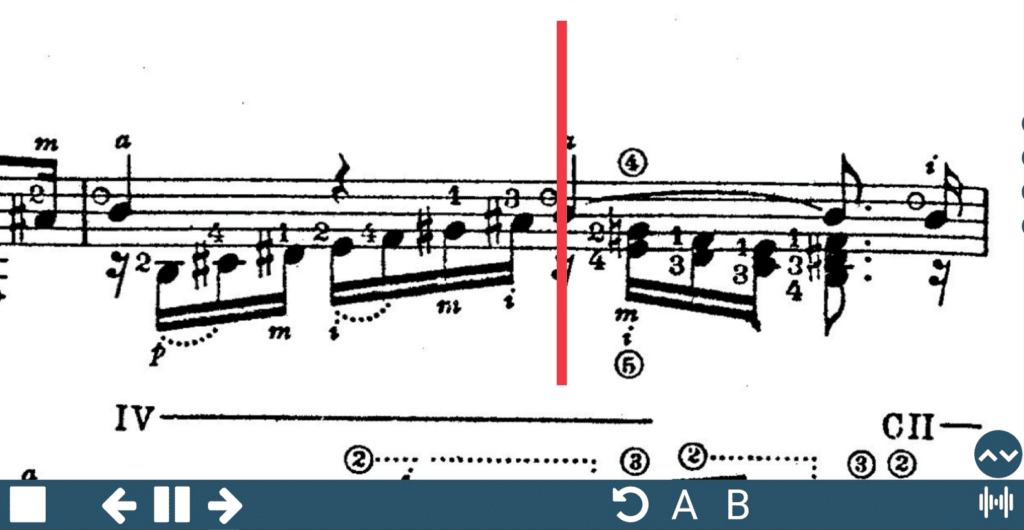
This is a one-time effort that requires about 2-5 min. per page, depending on the complexity of the score. Once this is done, the cursor runs along with the music at the right tempo, similar to Musescore.
You can zoom continuously and use the device in portrait and landscape mode. The screen section always follows the cursor.
Accompaniment
A switchable and configurable acoustic and visual metronome accompanies you. A count-in can also be switched on.
Additionally, you can be accompanied by an audio file. To perfectly synchronize the audio file with the notes, the app automatically detects the time of the first beat and the tempo of the recording. You can also adjust these values manually.
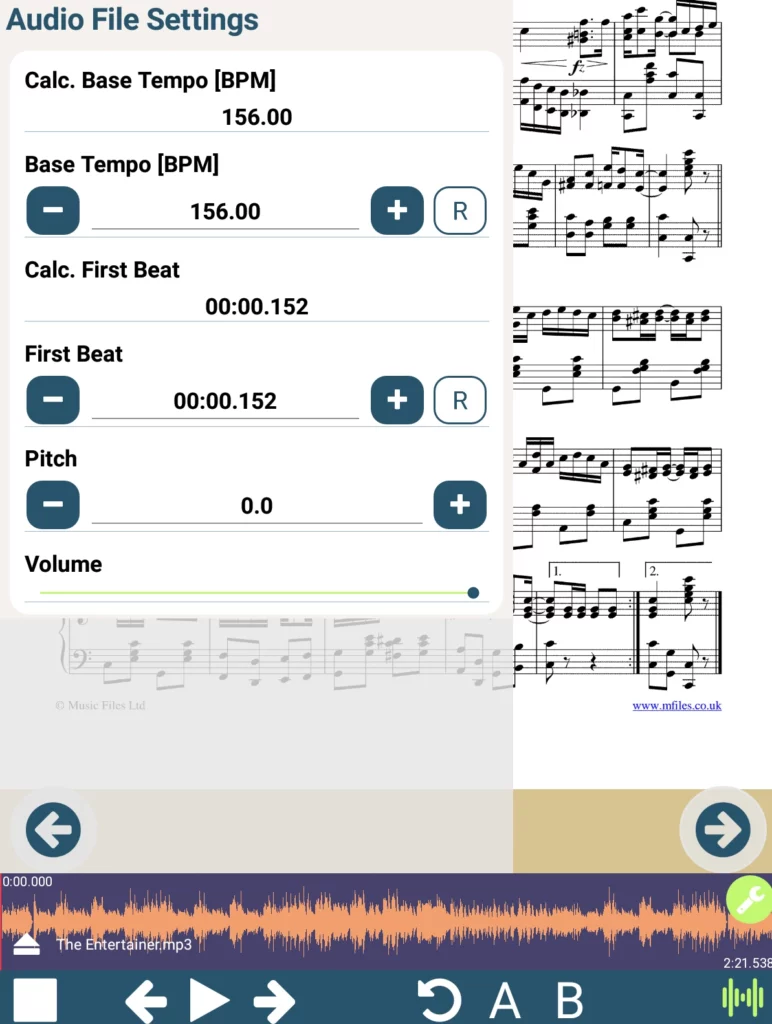
Own notes and comments

You can add freehand drawings, lyrics and musical symbols, from an extensive library, to the sheet music.
Special Features
As with Musescore, you can define loops for practicing. If you have imported a pdf with several pieces, you can divide the score into sections and play them separately. The individual sheets of a score can be shown and hidden, the order of the sheets can be changed, and you can add more sheets.
To simplify playing, the app can automatically start the song via microphone when a certain recording level is reached. This way you don’t have to take your hands off the instrument at the beginning.
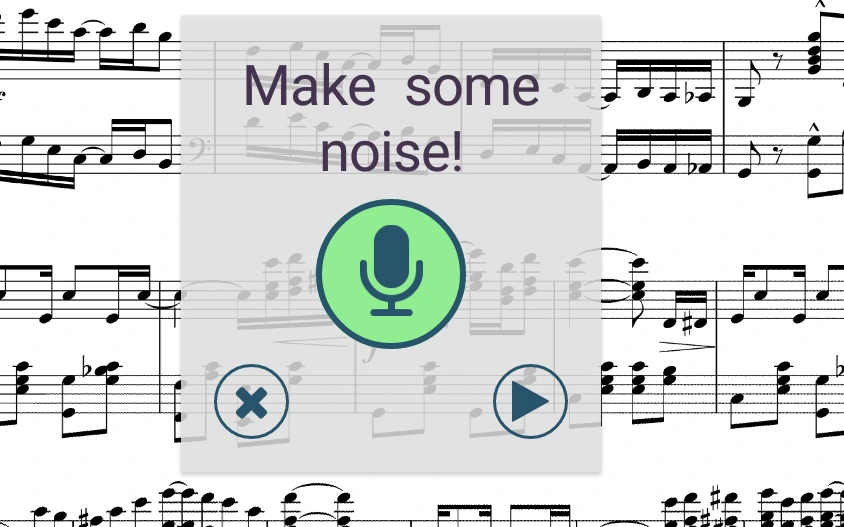
Conclusion
Pros
- You can use your own sheet music
- Freehand playing is, with some additional effort, possible without restrictions
- Optionally, a foot pedal can also be used
- The app can be synchronized very well with an audio file
Cons
- Initial setup of scores takes some time
- No online music library
- No support for midi (yet). But we are working on it!
Links and Download
Mobile Sheets
Mobile Sheets was one of the first music sheet music apps for Android. There is a free version and a paid version (currently 18,99€). The free version can only import a maximum of 7 songs and lacks some advanced features.
Importing Files and Sheet Music Library
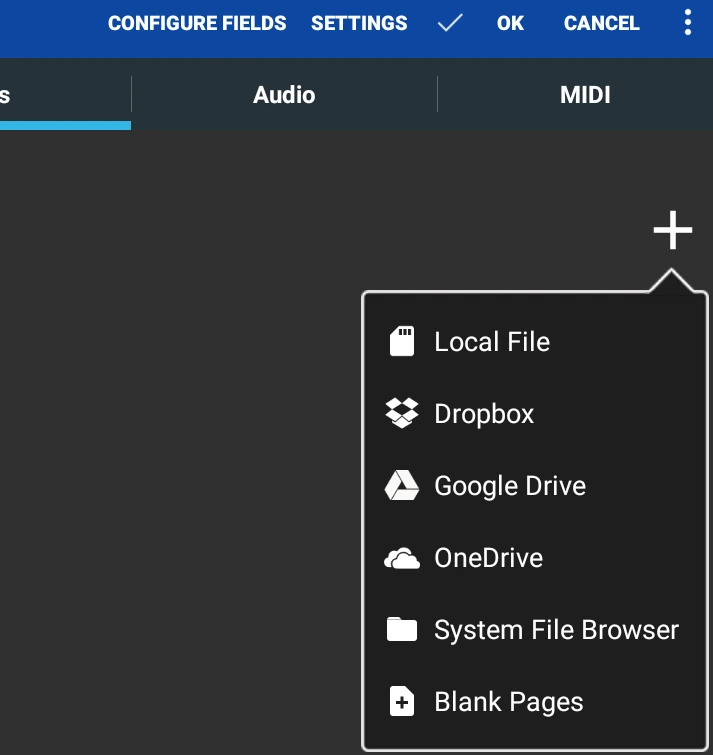
A particular strength of the app are the extensive functions for organizing and managing your sheet music.
There are 20 sorting criteria available to help you find and organize your songs.
Additionally, there is a companion app for Windows that lets you manage your song library from your PC.
You can import files from internal storage, as well as from Dropbox, Google Drive and One Drive.
The imported sheet music can be cropped to provide more screen space for the actual sheet music.
You can combine multiple songs into a setlist, so you always have the next song ready when performing.
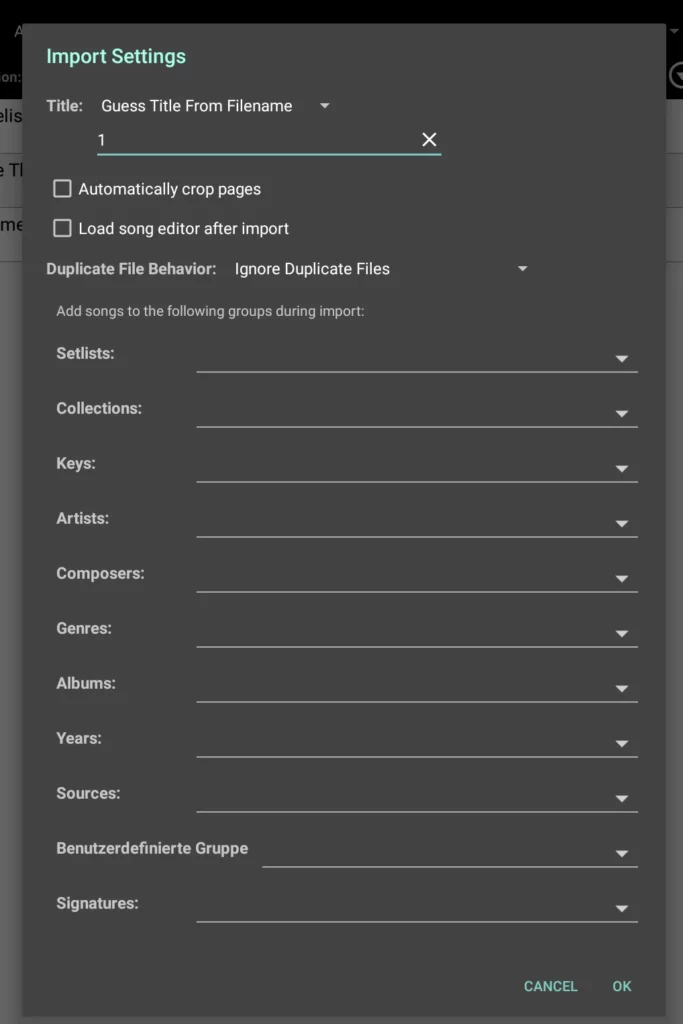
Turning Pages and Scrolling

If you open a song in portrait mode, you can swipe to turn the page. You can also zoom the page. However, this is where it gets a bit unwieldy, because if you want to scroll to the page in the zoomed view, the app turns the page instead of just moving the view.
In landscape mode, half a page is displayed. You can choose in the settings whether you want to switch between the half pages by swiping or by scrolling.
Additionally, the app can scroll through the sheet music at a constant speed. Here, however, you have to fiddle a bit to find a suitable speed.
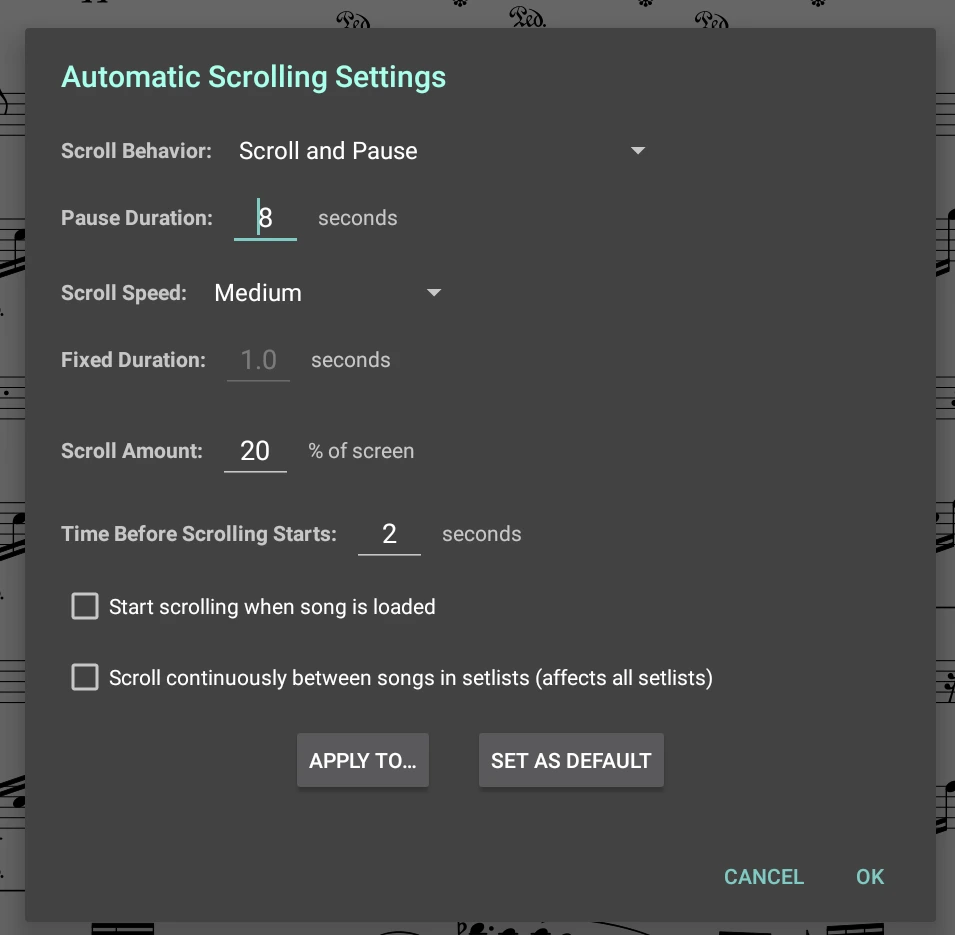
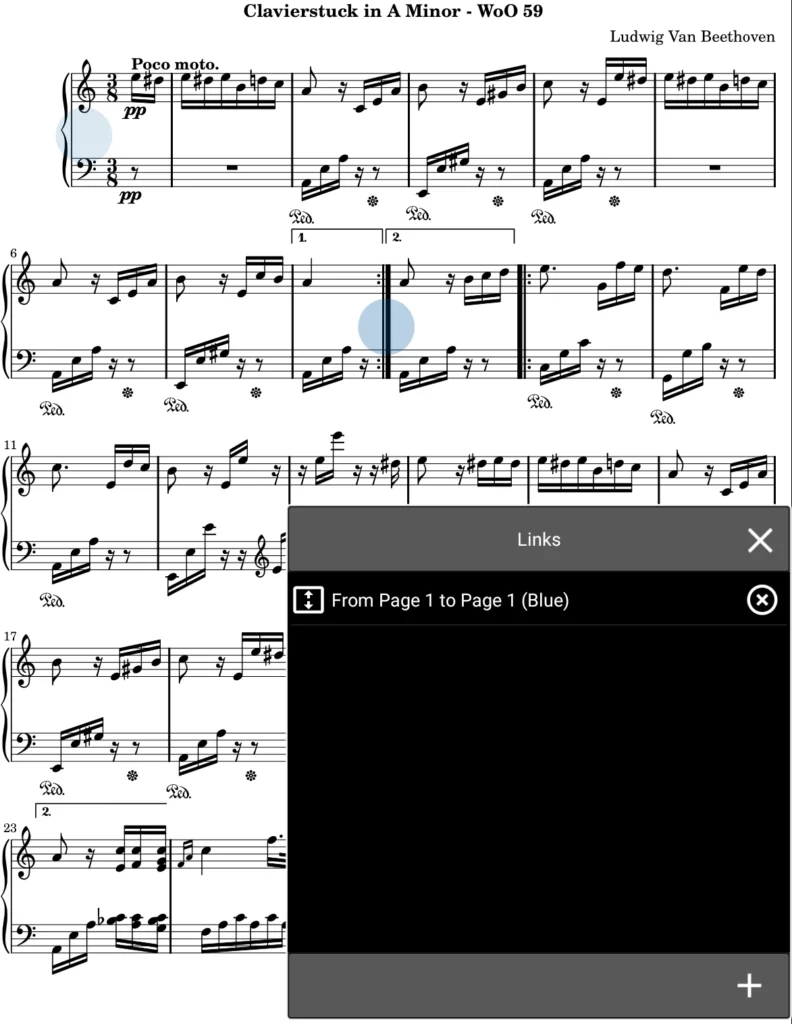
Links can be set at any point in the sheet music, which represent a jump command. If you tap on them, the app jumps to a defined position in the score. This way, you can quickly jump back to the beginning of a repetition.
Accompaniment
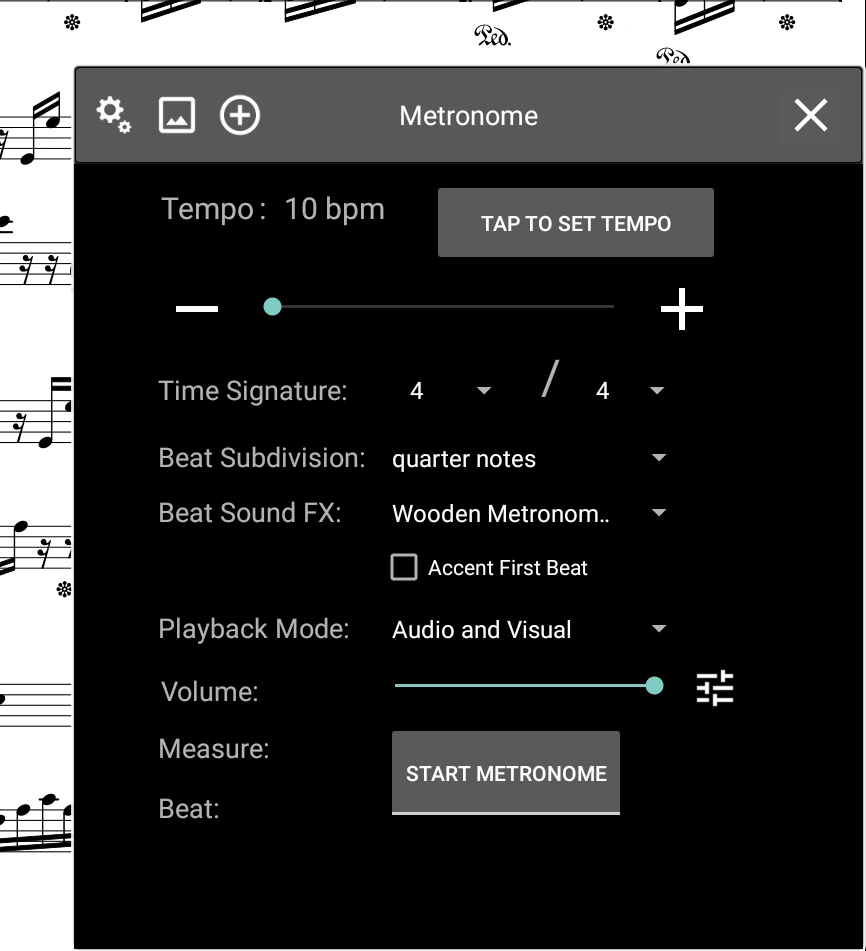
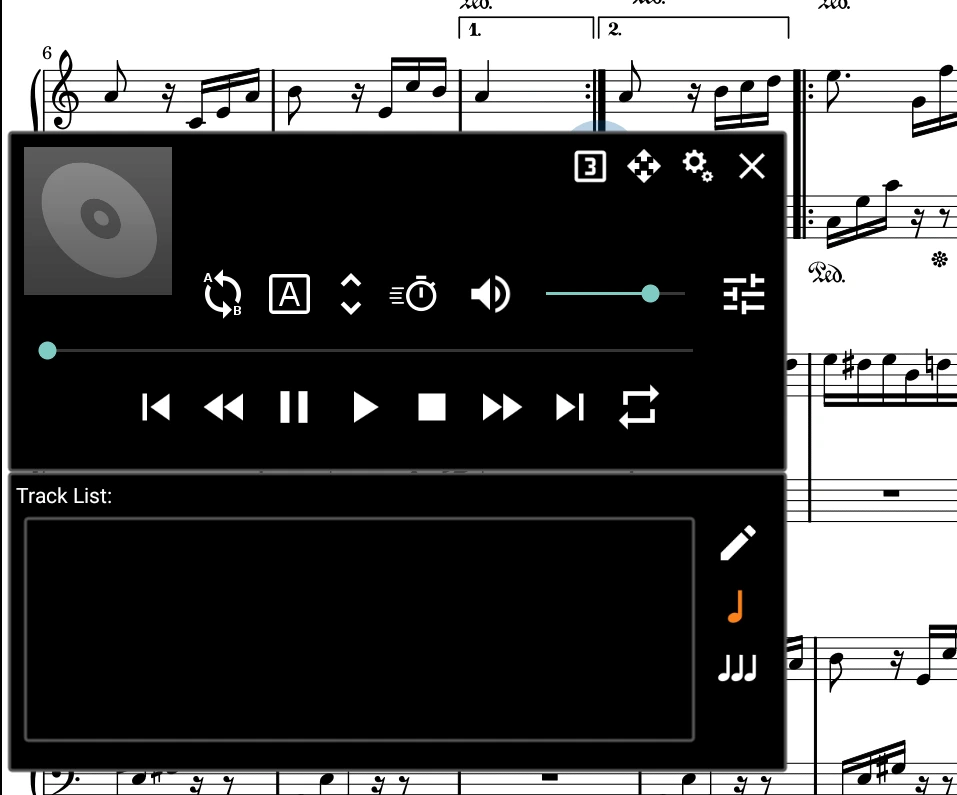
For accompaniment you can start a metronome that is displayed visually and/or acoustically.
It is also possible to play an audio file. The playback tempo and the pitch can be adjusted independently of each other using time stretching.
Own notes and comments
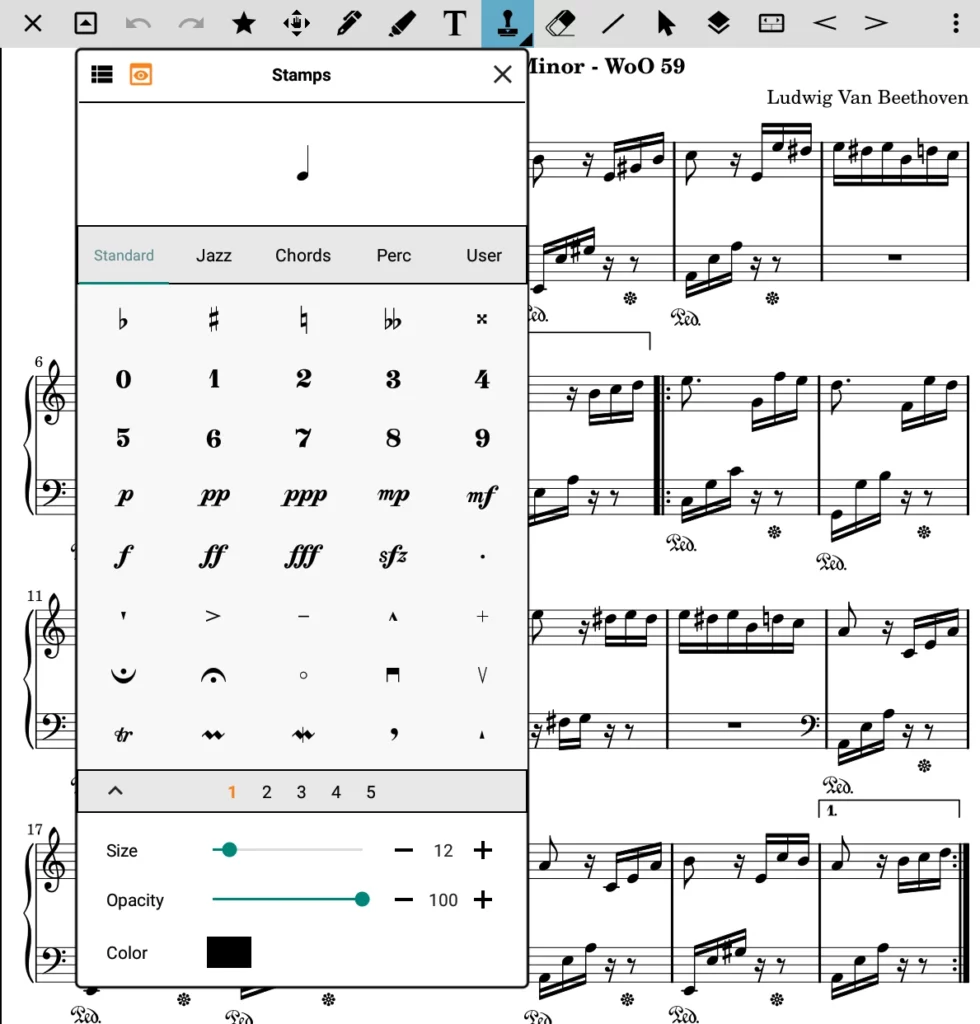
The program provides extensive annotation and drawing functions.
You can insert texts, freehand drawings and musical symbols selectable from a large library.
Special Features
Advanced users can have certain program functions controlled by midi commands as well as send midi commands from the app to connected devices. For example, opening a sheet of music can automatically start playback on a connected midi device, or vice versa, a sheet of music can be opened by a midi command.
Another practical feature for band or choir rehearsals is the ability to connect multiple tablets and turn pages synchronously from a master tablet.
A Bluetooth foot pedal can also be connected via Bluetooth to switch to the next page.
Conclusion
Pros
- The app is extremely comprehensive and offers so many functions that it is impossible to list everything in this article. The developers have obviously made an effort to include everything a musician’s heart desires, and leave hardly anything to be desired.
- Very good functions for managing an extensive collection of sheet music.
- Very good drawing and comment functions
Cons
- The abundance of menus and setting options can initially overwhelm a newcomer to the software. A certain training period and studying the manual is definitely necessary to use the app effectively.
- Hands-free playing is only possible to a limited extent. In any case, a Bluetooth foot pedal is required. Automatic scrolling is possible, but leaves many wishes open, such as taking repetitions into account or adjusting the scrolling tempo to the music.
- The app is only available for tablets. There is no version for smartphones.
Links and Download
Musescore
The Musescore app is part of the Musescore ecosystem, which also includes a free (open source) music notation program and a large library of open source and free sheet music.
If you have composed your own score with Musescore, you can upload it and use it in the app.
Importing Files and Sheet Music Library
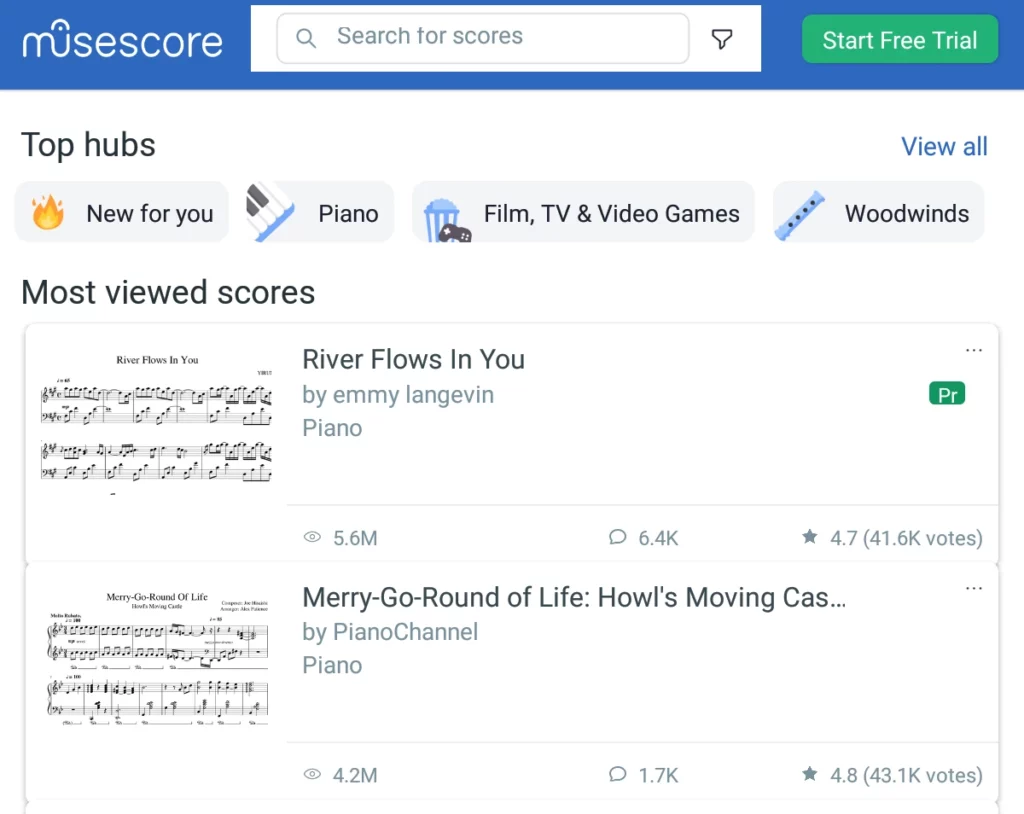
Consequently, the app can only obtain scores from the Musescore.com online library.
The app also offers a subscription to Musescore-Pro, which unlocks additional features (approx. 4€ – 6€ per month depending on the duration).
Turning Pages and Scrolling
Since the Musescore format OpenXML was generated in a music notation program, it already contains all the information needed to play the score exactly.
Freehand playing to the scrolling sheet of music is therefore not an issue here and is possible without any problems.
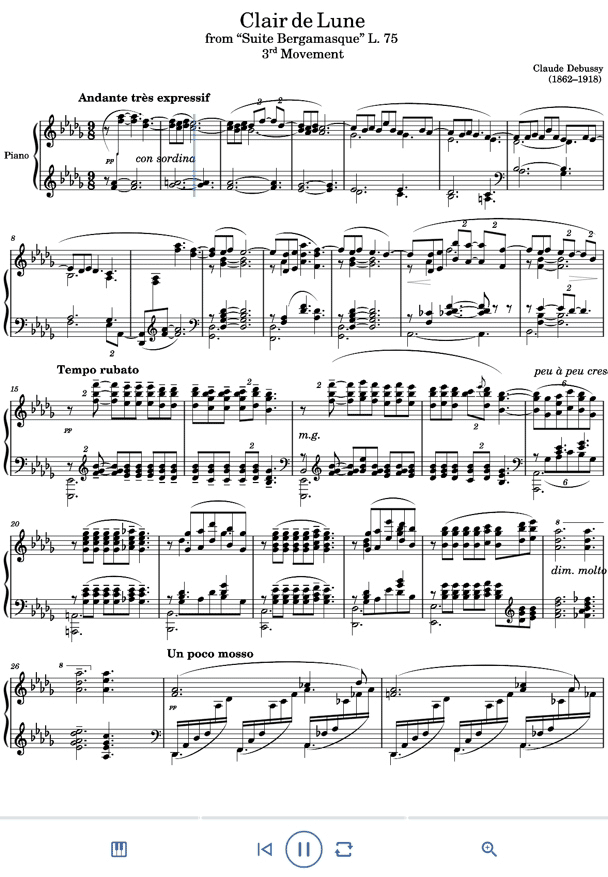
Either the entire sheet of music can be displayed, or only the current stave, which then scrolls seamlessly from left to right through the entire piece.
In both cases, a cursor indicates the exact position to be played.

Accompaniment
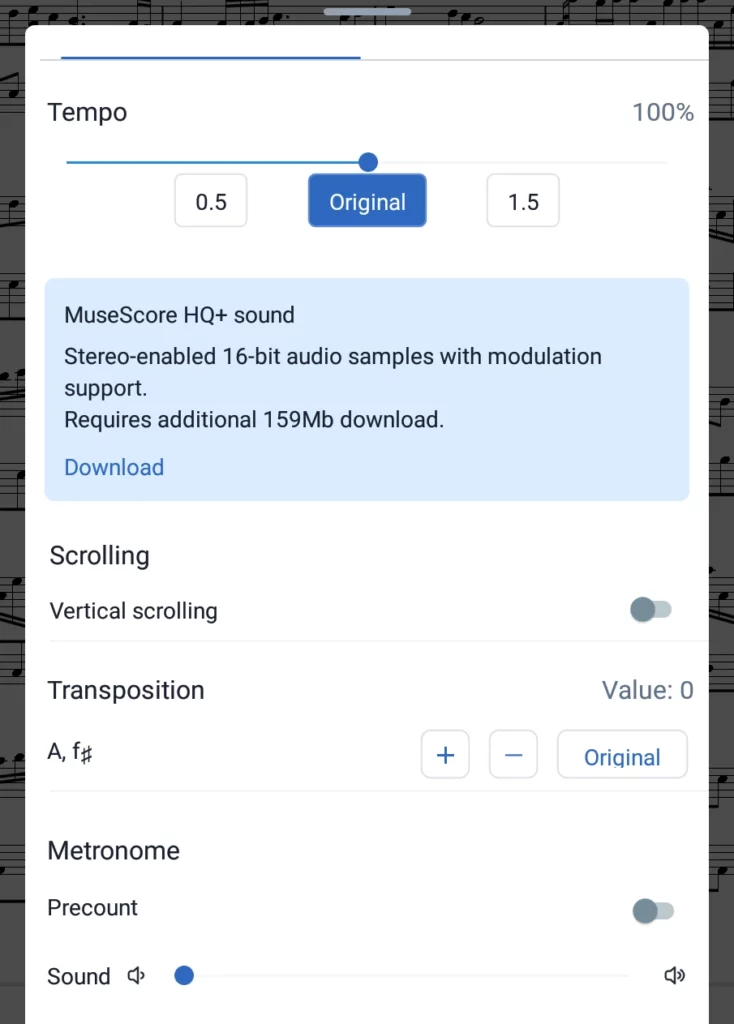
As accompaniment, the piece itself can be played with the integrated player. In the free version, the piano is always used here. In the subscription version, the player can also play other instruments to accompany the piece.
Of course, there is also a metronome and – very practical – a configurable precount.
In side scroll mode, an on-screen keyboard can also be displayed that highlights the keys you need to press.
The tempo can be varied at will.
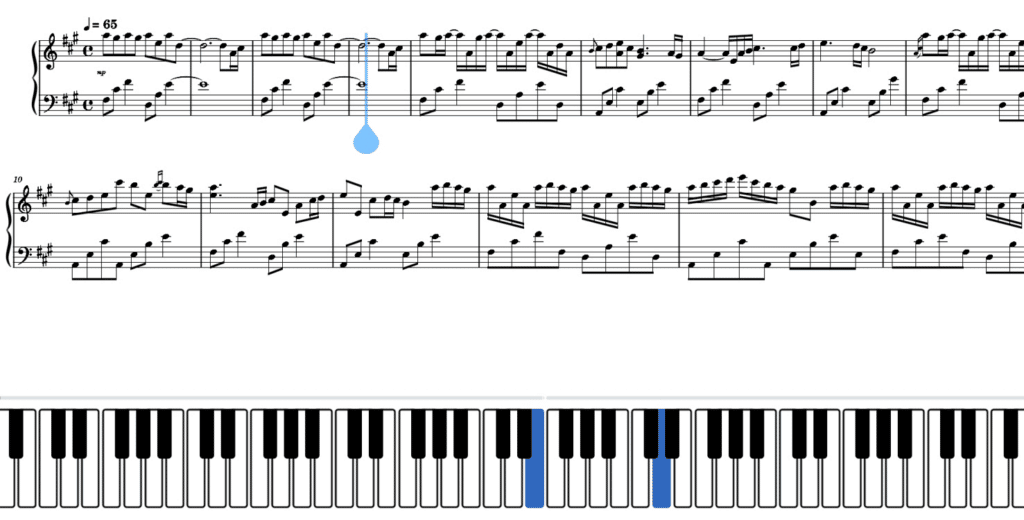
Own notes and comments
Unfortunately, the app does not offer the possibility to insert notes. For this, the Musescore application on the PC is required.
Special Features
Loops can be defined for practice, so that you can practice difficult passages specifically.
With the subscription version the following functions are activated:
- Transpose notes
- Export of the score as Pdf, MIDI and MP3
- Better sound and multiple instruments in the integrated player
Conclusion
Pros
- Thanks to the intelligent MusicXML format, you can instantly play hands-free to the scores without any further configuration.
- A wide range of free sheet music is available to you via Musescore.com
- Good features for practicing, like loops and the on-screen keyboard.
Cons
- It is not possible to use your own scores as a scan or in PDF format.
- The app does not run very stable (at least on our test device). Unfortunately, crashes happen again and again.
- The free version can only be used online and with registration at Musescore.com. Offline functions are only available in the subscription version.
- The app is only available for tablets. There is no version for smartphones.

Pingback: Scan and digitize sheet music: The complete guide 2025